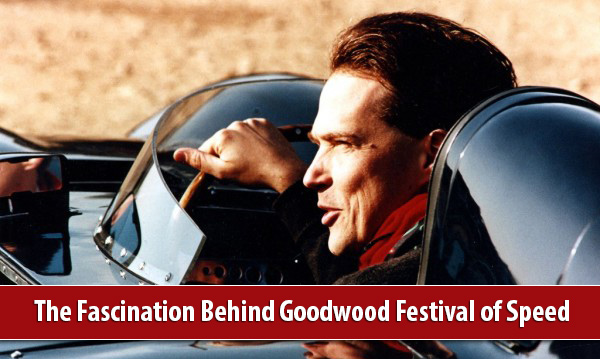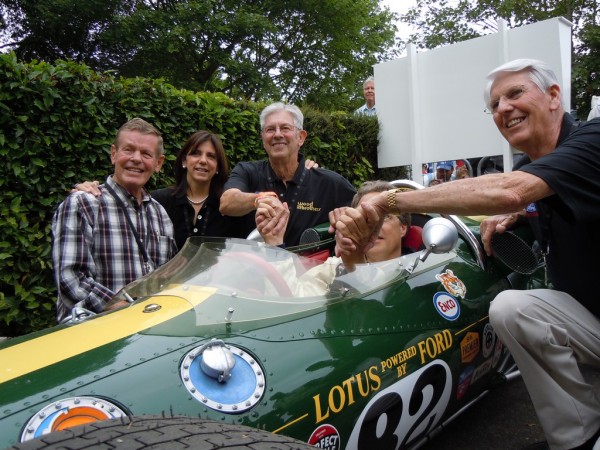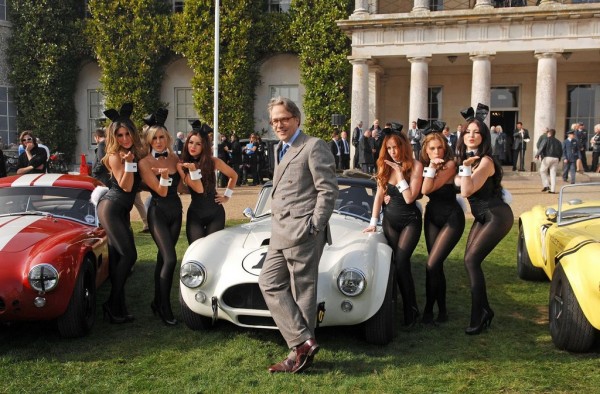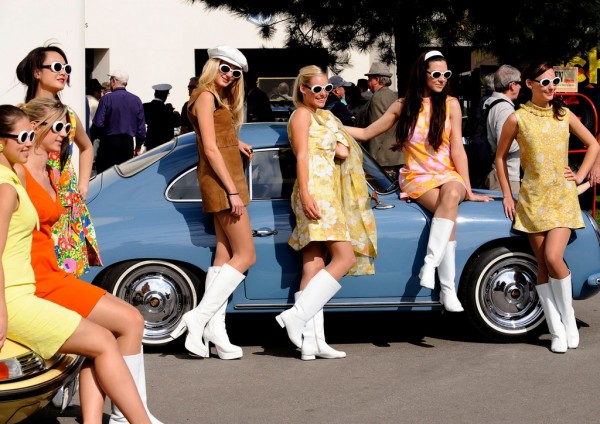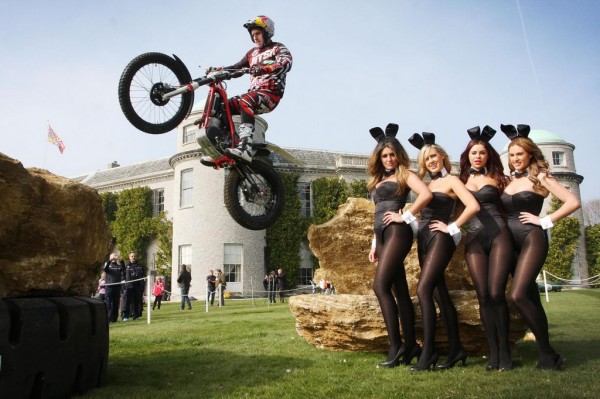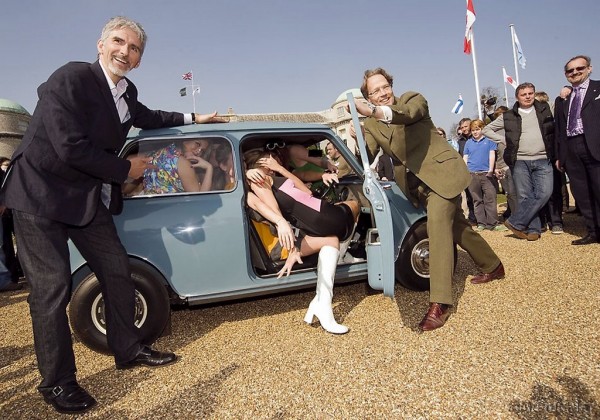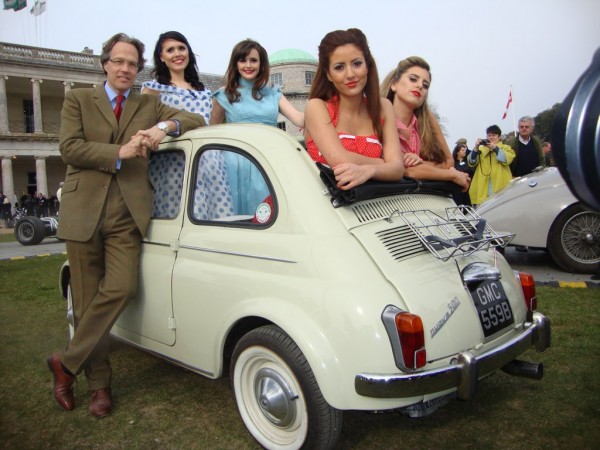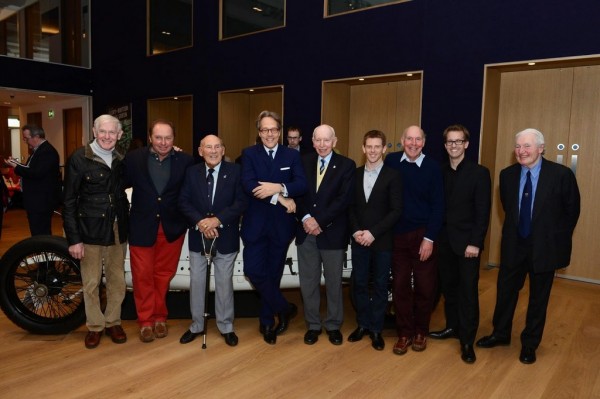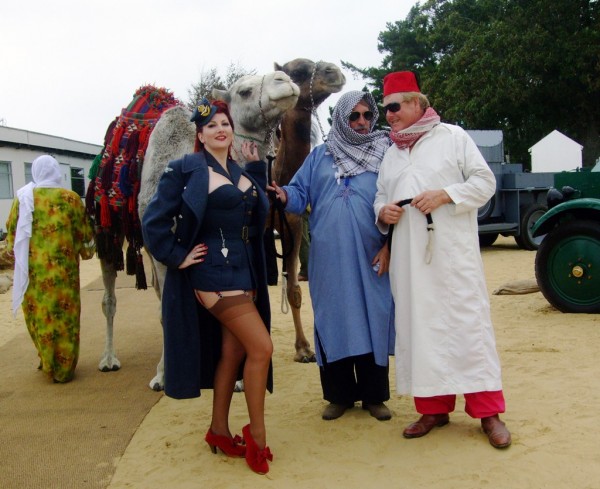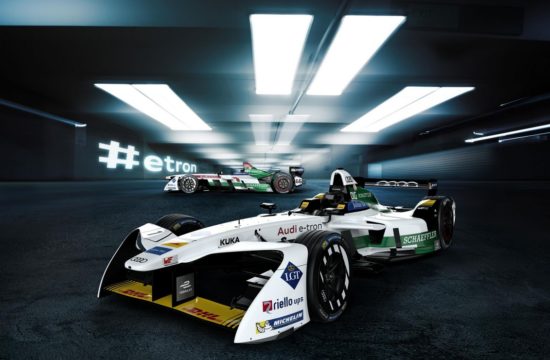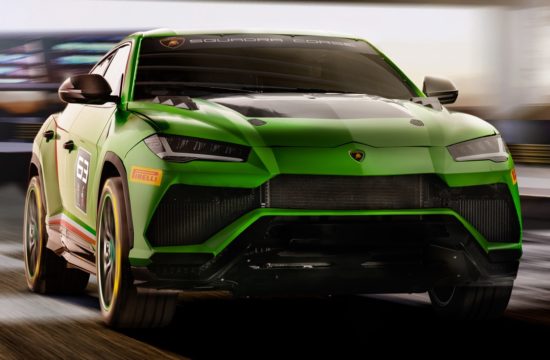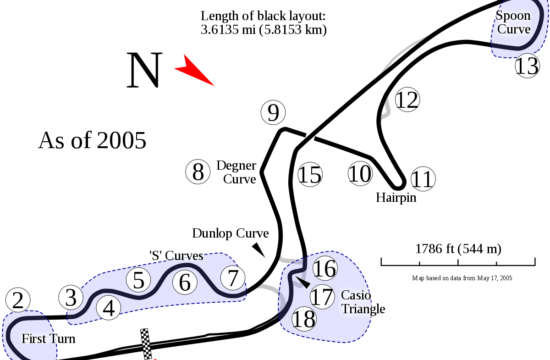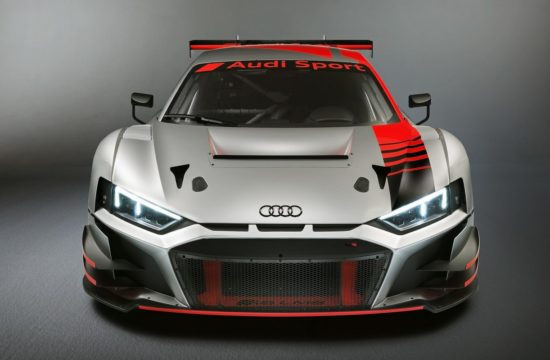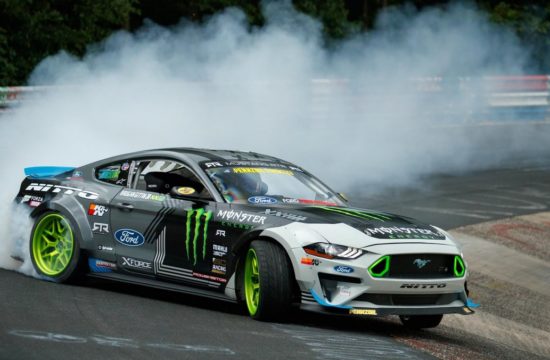Year after year, one of the most important summer events is the already famous Goodwood Festival of Speed. And each time, the frenzy around the festival is incredible: new car launches, the event’s ground is flooded by supercars and many celebrities, especially those involved in motorsport, make an appearance over here. But what exactly is the Goodwood Festival of Speed and why is it so important in the automobile world? These are some of the questions we’ll try and answer in this article.
Lord March’s idea
The man behind the Goodwood Festival of Speed is Charles Henry Gordon-Lennox, Earl of March and Kinrara. Or Lord March, that’s shorter. He was born in 1955 and is the one who manages his family seat and the Goodwood estate for his father, Charles Gordon-Lennox, 10th Duke of Richmond. Besides managing the impressive estate in Southern England, Lord March also continued horse racing tradition and takes good care of the Goodwood Racecourse where the annual Glorious Goodwood event takes place, one of the most important events in the British flat racing calendar.
However, Lord March’s biggest passion is definitely motor racing, which he probably inherited from his grandfather, Frederick Gordon-Lennox, 9th Duke of Richmond, also known as Freddie Richmond. Young Freddie became interested in engineering when he was studying at the Eton College and would later become an apprentice at Bentley Motors. A few years later, he began motor racing and his first event was the JCC High Speed Trial in 1929. In 1930, he joined the Austin team and won the Brooklands 500 Miles. The following year he raced with his own team, MG Midgets and won the Brooklands Double Twelve. He eventually stopped racing but remained actively involved in the managerial part of motor racing, becoming the longest-serving Vice President of the Royal Automobile Club.
After World War II, during which he served in the Royal Air Force, Freddie Richmond decided to create a motor racing circuit from a fighter station that was built on his Goodwood estate during the war. For 20 years, the circuit was an important venue in British motor racing, but Freddie decided to close it in 1966, due to safety concerns.
As for his grandson, Lord March, he decided to create the Goodwood Festival of Speed in 1993. He also created the Goodwood Revival festival, with the first edition held in 1998, which recreates the golden era of British motorsport from the 1950s and 1960s. And Lord March went as far as to create a dressing code for the first edition, with everyone being required to dress accordingly to the 1960s. This festival is seen as one of the few opportunities one has of experiencing what racing was in those days, without all the modern racing features we see today. Plenty of famous drivers took part in this festival, including Sir Stirling Moss, Sir Jack Brabham, John Surtees, Phil Hill, Damon Hill, Giacomo Agostini or David Coulthard.
For organizing these two events, Lord March is widely regarded as one of the most important persons in British motorsport and he is often included on lists of most influential people. He is also the president of the British Automobile Racing Club (BARC).
After Lord March took control of the Goodwood Estate, he decided to bring back motor racing at the Goodwood Circuit. However, since he didn’t have all required authorizations and permits, he chose to host the event on his own property. And this is how the first Goodwood Festival of Speed was born, with the first edition taking place in 1993. It seemed that people really felt the need for such an event, because the first edition was attended by 25,000 people, despite the 24 Hours of Le Mans race being scheduled in the same weekend. Due to this date clash, all festivals ever since were held on different dates, depending on the Le Mans and Formula One calendar. And because feedback was so overwhelming, in 1994 the festival was expanded to two days, with a third day (Friday) being added two years later, in 1996. The event’s popularity constantly grew and a record number of visitors was recorded in 2003 when a crowd of 158,000 attended the weekend. The following year, tickets were sold for the first time and the number of visitors dropped, but passion was worth it and in 2005, more than 150,000 people attended the festival. However, the absolute record was set in 2012, when a total of 185,000 tickets were sold. Last year, the figure was also above 180,000 but less than in 2012.
The course is 1.16 miles (1.87 kilometers) longand passes right in front of the Goodwood House and then up a small hill located on the same property. There’s also a separate stage held on a 1.67 mile (2.7 kilometers) course thatincludes forest and gravel. This course was created specifically for the rally stage.
Marketing
In time, the popularity of Lord March’s event brought it to the attention of leading car manufacturers, which soon started bringing concept cars or unveiling new models for the first time over here. Basically, the Goodwood Festival of Speed turned into a small open motor show, especially with Britain’s major car event, the British Motor Show, being canceled following the financial crisis that struck in 2008. For example, in the past, the Aston Martin Vanquish or the Renault Clio RS were unveiled for the first time at Goodwood before officially being introduced (it’s true, the Renault Clio was heavily camouflaged, but still, it left enough clues for motor enthusiasts to see what the car was about). Jaguar did the same in 2012, when they brought a camouflaged prototype of the F-Type which took a lap on the Goodwood course. The same year, Romanian carmaker Dacia unveiled the Duster crossover for the first time on British grounds before the official launch.
Other carmakers also showed their cars being driven for the first time, even though the models had already been announced or unveiled at a motor show, while others created different advertising stunts, all adding to the Goodwood Festival of Speed’s fascination. For example, Infiniti showed the upcoming Emerg-E supercar, the McLaren P1 was seen running for the first time, Renault brought the spectacular Alpine A11-50 concept car, while Nissan hired famous stunt driver Terry Grant to drive a lap of Goodwood in a Nissan Leaf…in reverse!
Popular attractions
Perhaps the most popular event at the Goodwood Festival of Speed is the hill climb. Due to the event’s classification and Lord March’s desire to recreate the history of motorsport, including the original atmosphere, visitors are allowed to sit extremely close to the track, being separated only by a “barrier” of reinforced straw bales. Visitors are also allowed to walk freely around paddocks and see cars and celebrities up close, without the restrictions usually experienced at high profile motorsport events such as Formula One races, World Rally Championship stages or MotoGP races. This makes the event extremely popular, especially with the high number of celebrities that attend the festival each year, from motorsport stars (many Formula One drivers make an appearance each year) to actors or other celebrities. Take, for example, Nick Heidfeld. The Formula One driver made an appearance at the 2000 edition and set the track record for the hill climb course, 41.6 seconds, while reaching a top speed of a little over 100 mph. HeikkiKovalainen broke the record in 2006, driving the Renault R25 F1 car, but his timing was unofficial so the record was not validated. And Heidfeld’s record will probably stay there for a long time, because 2000 was the last year Formula One cars were allowed to take part, for safety reasons (Kovalainenrun was made during a private session).
Starting with 2010, the Moving Motor Show was held for the first time, as a response to the cancellation of the British Motor Show. This is an unofficial fourth day which is aimed at people looking to buy a new car. During this event, they have the chance to drive the cars they’re interested in on the hill climb course. Potential customers have a wide range of cars to choose from, including supercars such as the McLaren MP4-12C. Following the success reported by the first edition, the Moving Motor Show day was held each year, on the Thursday before the festival.
Another popular attraction is the Sunday Times Supercar Run. The event was held for the first time in 2000 and it’s basically a big show off of production supercars. It’s that time of the festival when car manufacturers (large or small) bring their latest or more impressive creations and show it to the audience. Whether we’re talking about production supercars, concept cars or prototypes, they’re all there. And people love it.
The Soapbox Challenge was another popular event, which took place for the first time in 2000, but was cancelled in 2004 due to safety concerns. During this event, people drove a vehicle without an engine (gravity driven) downhill. However, the high number of accidents, especially in the later years, the more stringent safety measures and the high cost of vehicles made the organizers drop the event starting with the 2005 edition.
Unfortunately, there have also been several incidents throughout the festival’s history. Besides the frequent crashes or small incidents, there are three record fatalities. First one happened during the inaugural meeting in 1993, when Chas Guy was killed during practice in a motorcycle accident (he lost control of his bike and was thrown into a nearby tree). The second fatal crash took place in 2000, when John Dawson Damer was killed after crashing his Lotus 63 into the finish line gantry. Two race marshals were also involved in the crash, one of them, Andrew Carpenter, also dying, while the other one, Steve Tarrant was left with a permanent disability to his right leg (despite this, he is still marshal at the event).
Car manufacturer monuments
One of the traditions that stuck with the Goodwood Festival of Speed is the temporary monuments which are built each year by British artist and designer Gerry Judah. The monuments are on display on the lawn in front of the Goodwood House and each year the theme is changed, usually being dedicated to a certain car manufacturer or car model.
The first monument was built in 1997, which was dubbed “the year of the Prancing Horse” because it was Ferrari’s 50th anniversary. The sculpture featured a Ferrari F310B Formula One car that was suspended from an archway, with a large prancing black stallion on top. One year later, it was Porsche’s turn to celebrate 50 years and the Goodwood Festival of Speed honored them with four race cars (Porsche 936, 917, 956 and 911 GT1) that were lifted in the air and mounted on top of four poles. The monument also paid homage to Porsche’s recent win at the Le Mans race, which made them the most successful constructor to race in the famous French race.
In 1999, the Goodwood monument was dedicated to Audi and depicted the northern banking of the famous high speed Avus track in Berlin, Germany. This was the place where Auto Union (Audi’s predecessor) tested their new cars and where they achieved some of their finest victories in motorsport. The monument also included a 520 hp V16 Auto Union Type C/D and two 485 hp V12 Auto Union Type Ds. 2000 was the year of Jaguar, the monument depicting several racer cars built by the British carmaker such as the Jaguar XK120, the Jaguar E-Type, the Jaguar C-Type, the Jaguar D-Type, the Jaguar XJR-5 and the Jaguar XJR-8. The monument celebrated Jaguar’s debut in Formula One.
The 2001 sculpture was extremely impressive, being dedicated to the 100th anniversary of Mercedes Benz. The monument consisted of a Mercedes Benz 300SL placed on top of a purple support that represented a torrent of falling liquid that spreads as it hits the ground. Absolutely magnificent! The 2002 monument was no less impressive, celebrating Renault return to Formula One after a sixteen year break. The sculpture depicted a feather, with several Formula One cars attached to it: Renault RS01, Renault RE40, Renault RE60, Williams FW14, Benetton B195, Williams FW18 and Renault R202.
2003 was Ford’s year, the legendary American company celebrating its centennial that year. And Goodwood honored them with a huge sculpture of one of Ford’s most iconic vehicles, the GT40. Three sports cars were depicted, showing the carmaker’s triple finish at the 1966 edition of the 24 Hours of Le Mans. The cars on the monument were replicas, as the real ones ran on the track that weekend. The following year, Rolls-Royce also celebrated 100 years since Charles Rolls and Henry Royce began their historic partnership, and the British carmaker was honored at Goodwood. The sculpture was made of three parts, depicting Rolls-Royce’s supremacy on land, sea and air. At the center of the monument was a 1931 Campbell-Railton Blue Bird which broke the land speed record at the time, being powered by a Rolls-Royce engine.
Without any special anniversary that year, Honda’s involvement in motorsport was honored in 2005, when an impressive display featured six Honda powered Formula One cars that wrote history: Honda RA272, Honda RA300, Lotus 99T, Williams FW11, McLaren MP4/4 and BAR 006. Out of these, three were replicas, as the actual cars ran on the track. In 2006, motorsport celebrated 100 years since the first Grand Prix race took place and to mark this moment, a team of Renault engineers created an impressive computer program that revved the engine of a R26 Formula One car to play “God Save the Queen”. This was one of the most memorable moments of Goodwood.
In 2007, Toyota celebrated its 75th anniversary and 50 years since their involvement in motorsport began. To honor that important moment, a huge structure was built inspired by the famous Japanese Torii gates. The sculpture featured five of the most important race cars in Toyota’s history: Toyota TS010, Toyota Celica GT-Four, Toyota GT-One, Lola B2/00 and Toyota TF107. British carmaker Land Rover celebrated its 60th anniversary in 2008, and the Goodwood monument honored the carmaker’s all terrain essence, by showing a gravity defying structure of the entire Land Rover lineup at that moment: the Defender, the Discovery, the Freelander, the Range Rover and the Range Rover Sport.
Ten years after Goodwoodhonored Auto Union it was Audi’s turn again. The German carmaker celebrated its 100th anniversary in 2009 and the monument depicted the evolution from the Streamliner to the Audi R8, which was Audi’s latest sports car at the time and one of the best in the world. In 2010, Alfa Romeo became the second Italian carmaker to be honored at Goodwood, with a beautiful sculpture honoring the brand’s 100 year anniversary. The red monument depicted some of the car manufacturer’s most beautiful creations, the classic 1925 Alfa Romeo P2 and the amazing 8C Competizione.
In 2011, one of the car industry’s legends celebrated its 50th anniversary. We’re talking about the Jaguar E-Type, which was honored by a striking sculpture made of steel tubes that depicted the iconic car’s distinctive shape. The 2012 sculpture was called “Past, Present and Future” and was dedicated to Lotus. Even though it might not be going through its most glorious days, the British car manufacturer is an important part of the automobile history and Goodwood celebrated that by unveiling a beautiful monument that featured four of Lotus’ most successful Formula One cars: Lotus 49, Lotus 79, Lotus 99T and the Lotus E20.
Last year’s sculpture was also quite impressive, featuring three iconic generations of the Porsche 911 (the Porsche 911 classic, the Porsche 911 Carrera RS 2.7 and the Porsche 911 991) which were lifted on top of 35-meter steel plates. The entire structure weighted around 22 tons and what’s even more impressive is that at the bottom, it was slim enough for a person to wrap their hands around it. The monument was created to honor the 911’s 50th anniversary.
These are some facts about the wonderful celebration that is the Goodwood Festival of Speed, a special event that draws tens of thousands of car enthusiasts each year. We hope we got you a little more excited about it, now that you know more, and perhaps one day you’ll visit it, because trust us, it’s totally worth it!

